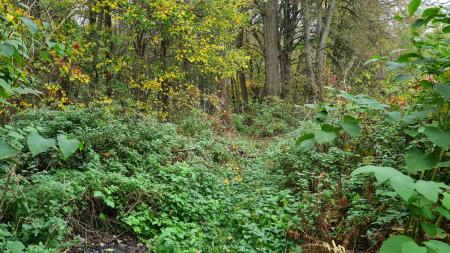Obj. ID: 44735
Jewish Funerary Art Jewish Cemetery in Jarosław - photos of 2020
To the main object: Jewish cemetery in Jarosław, Poland

According to ESJF European Jewish Cemeteries Initiative, the until the end of the 17th century, the Jews of Jarosław were buried in Przemyśl. In 1700, they obtained permission from the Vaad Arba Aracot to establish their cemetery. It was established 4 km to the north-west of the city, in the village of Kruchel Pełkiński. The area was gradually enlarged up to its final 2.3 hectare area. It was shaped as a quadrilateral and fenced with a wall with a gateway. There were two brick buildings and a ritual well behind the gate. After the death of the local tzadik Shimon ben Yisrael Maryles (who died in 1849), an ohel was built, in which his successors were also buried. During World War II, the wall and buildings were demolished. Tombstones made of precious rocks were taken to the Reich, and the rest were used for construction purposes. Executions and burials in unmarked mass graves took place at the cemetery.
There are 50 tombstones and about 100 fragments of tombstones have survived. There are inscriptions partially in German (from the period of the Austro-Hungarian Empire) and Polish (from the period of the Second Polish Republic). There are mainly traditional stelea made of limestone, sandstone and concrete. In 2005, the ohel was rebuilt.
Date of the oldest tombstone: 1896
Date of the latest tombstone: 1924
Perimeter length: 651 metres
The path to the cemetery starts to the right of 49, Kruhel Pawłosowski Street.





















